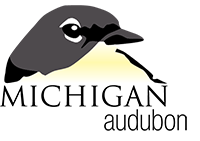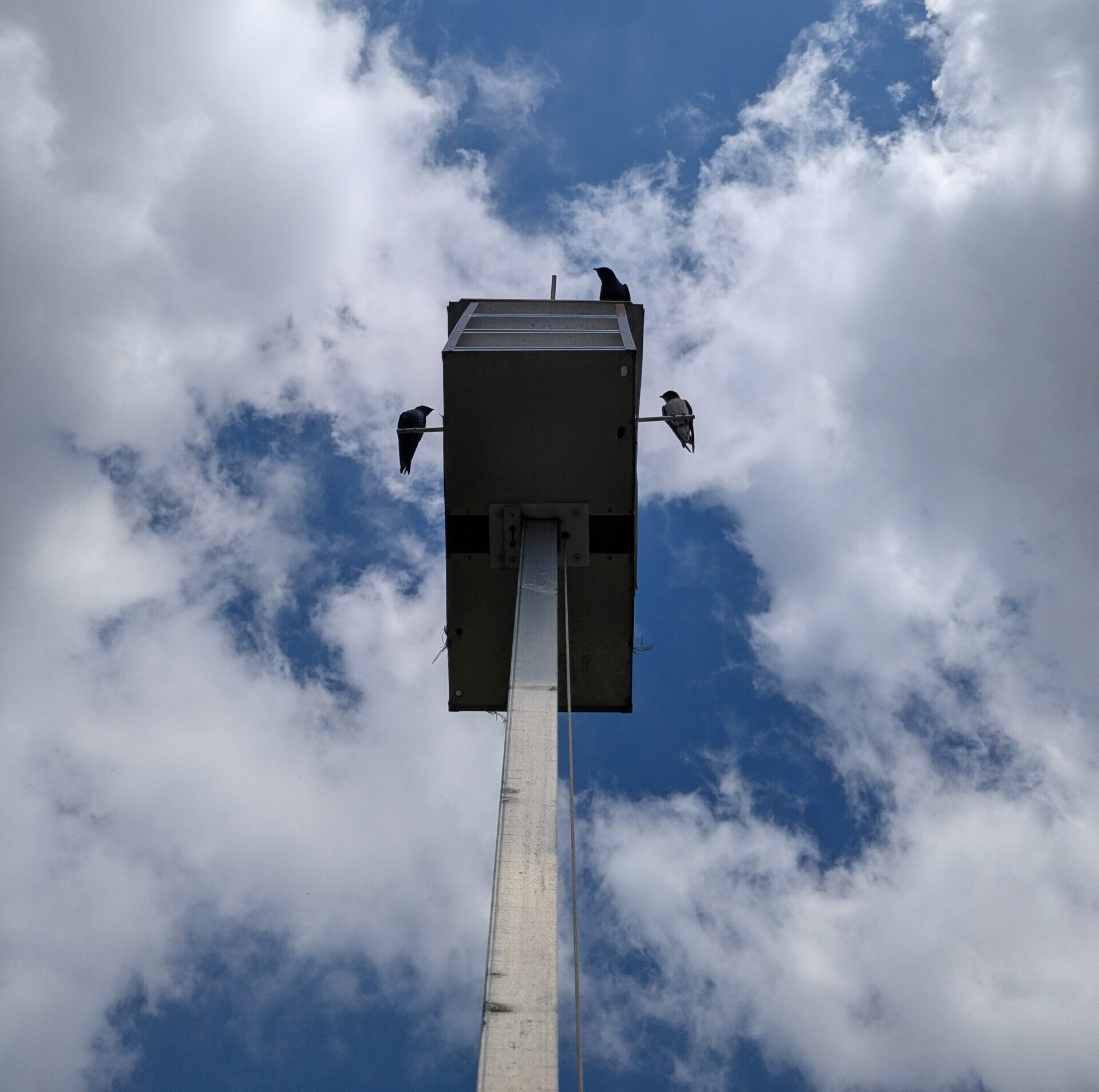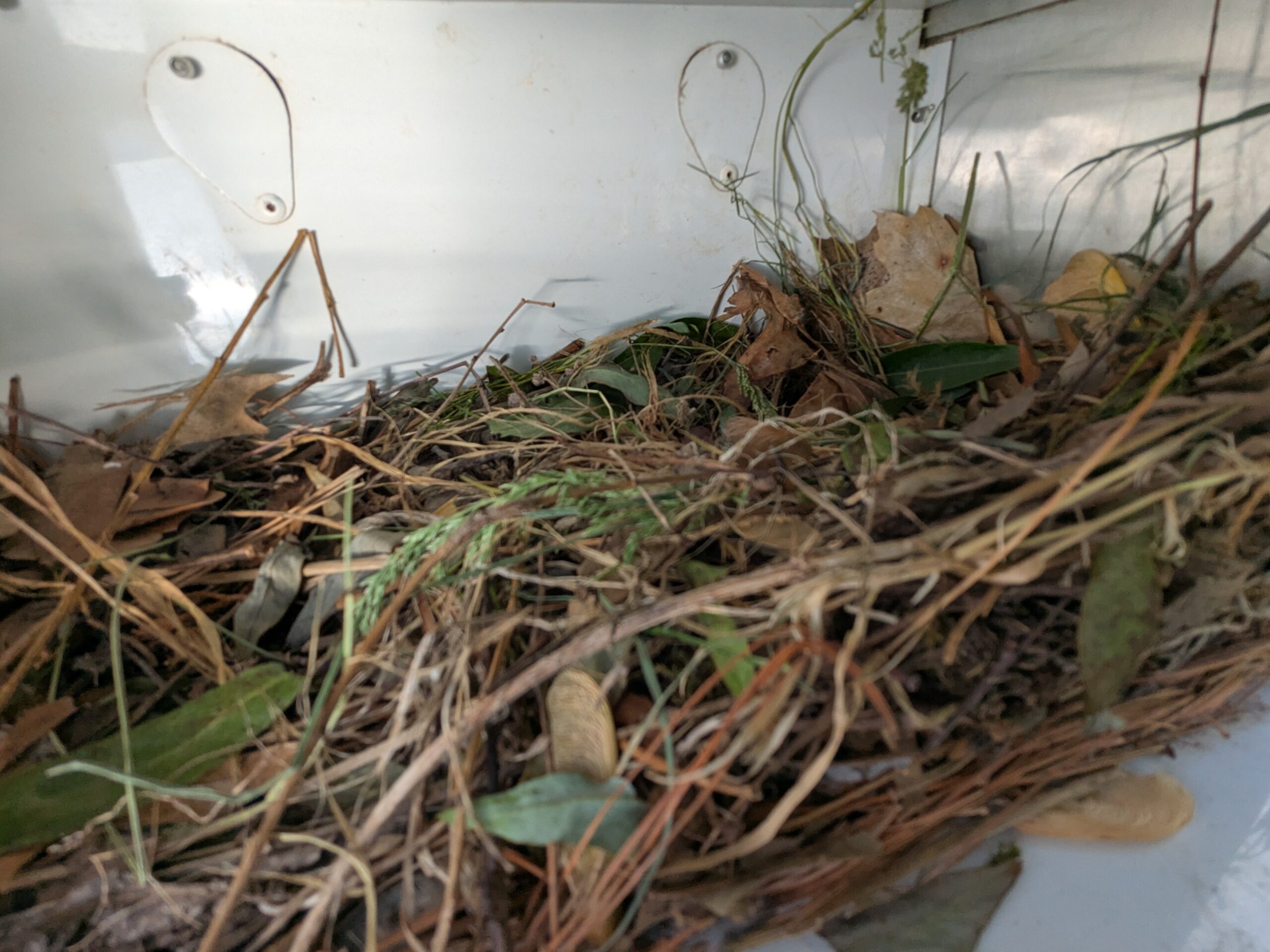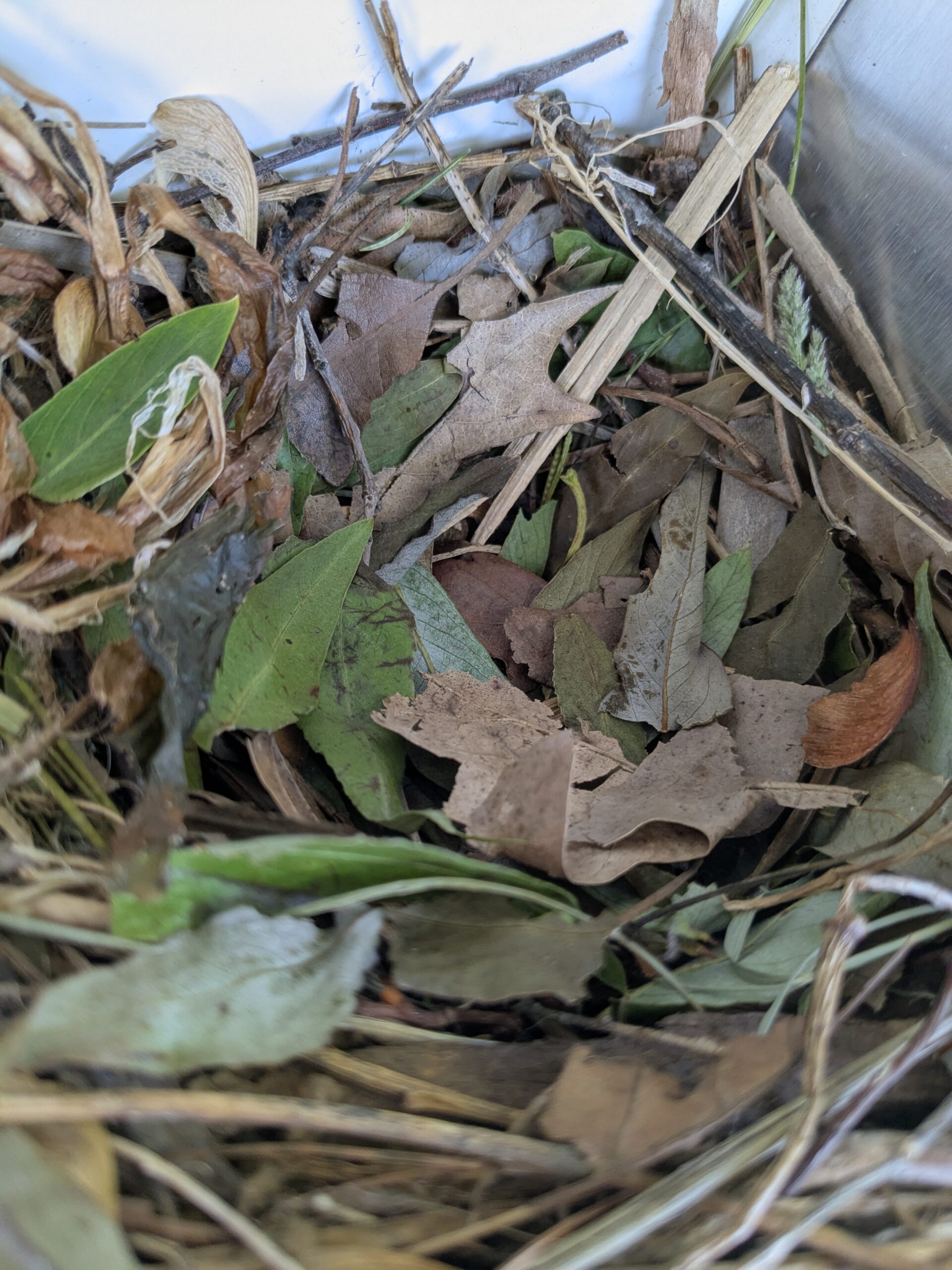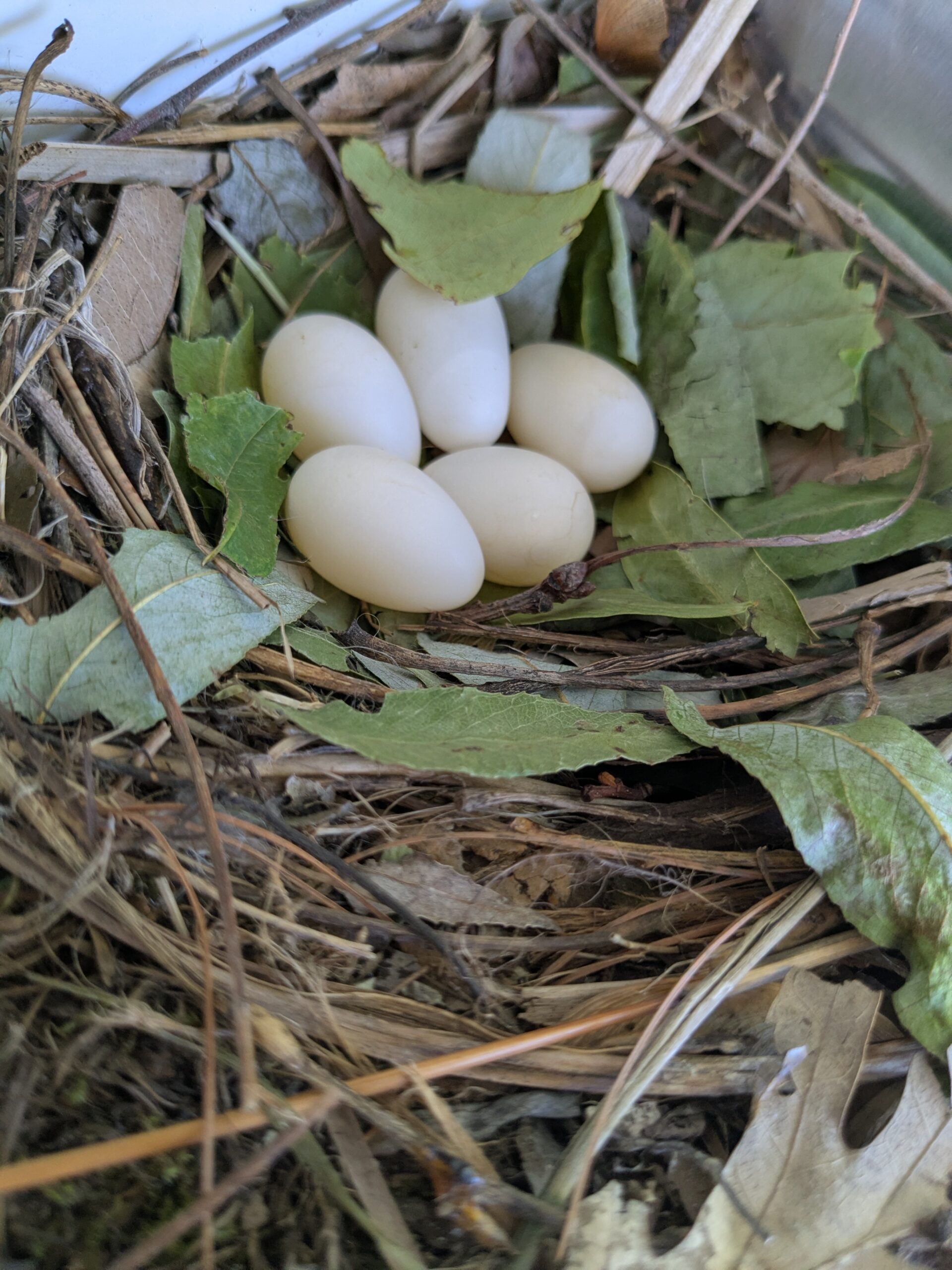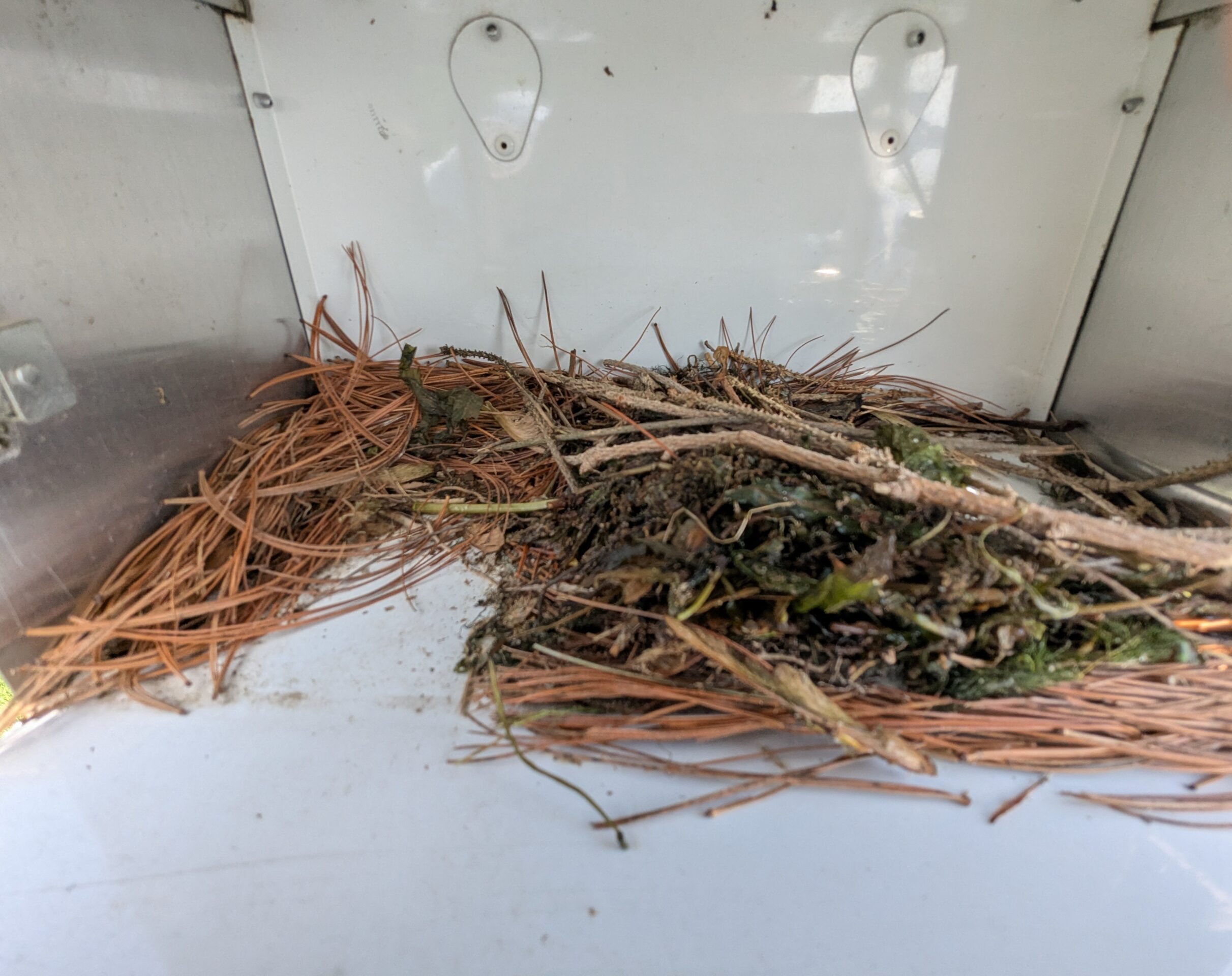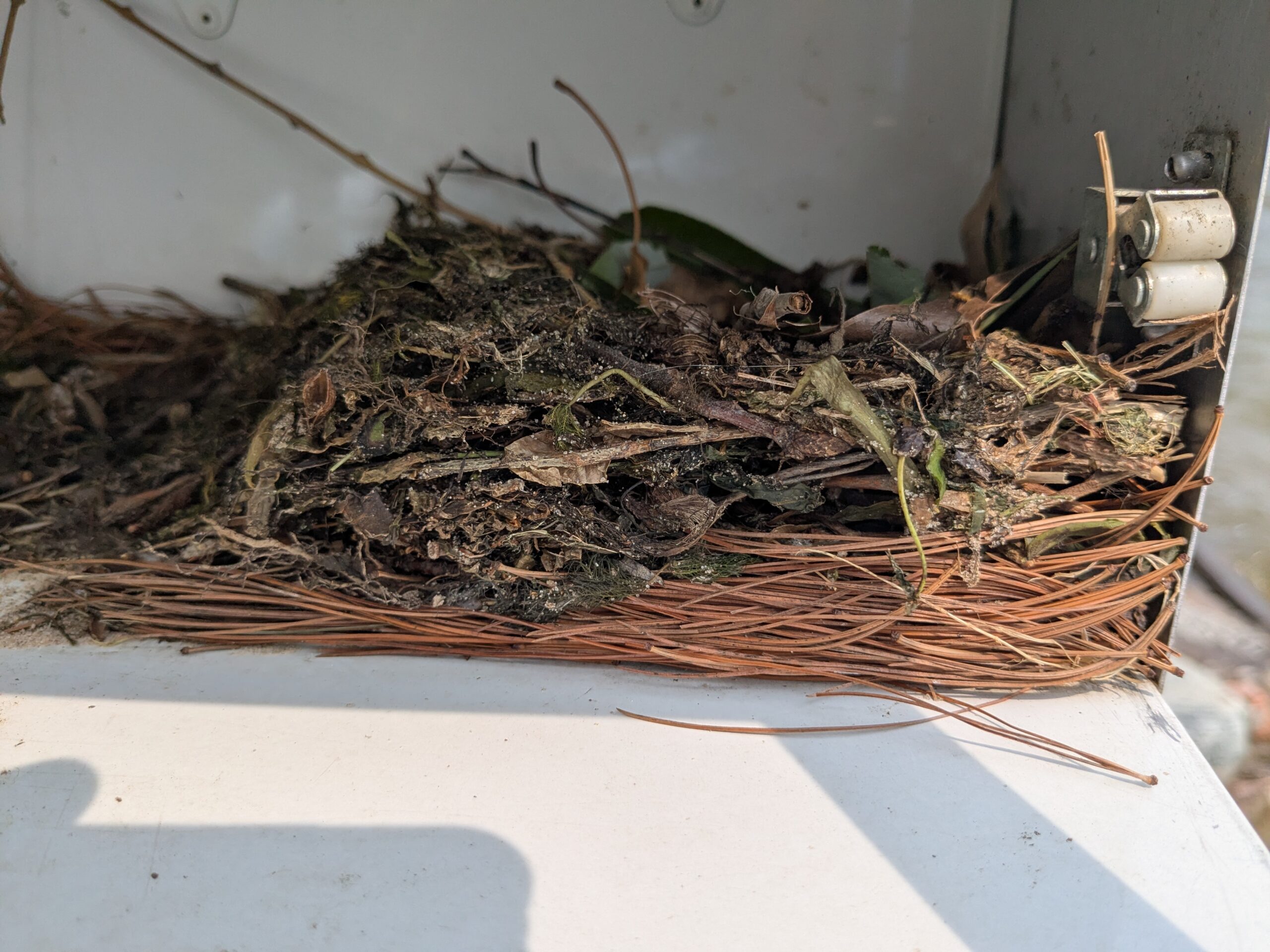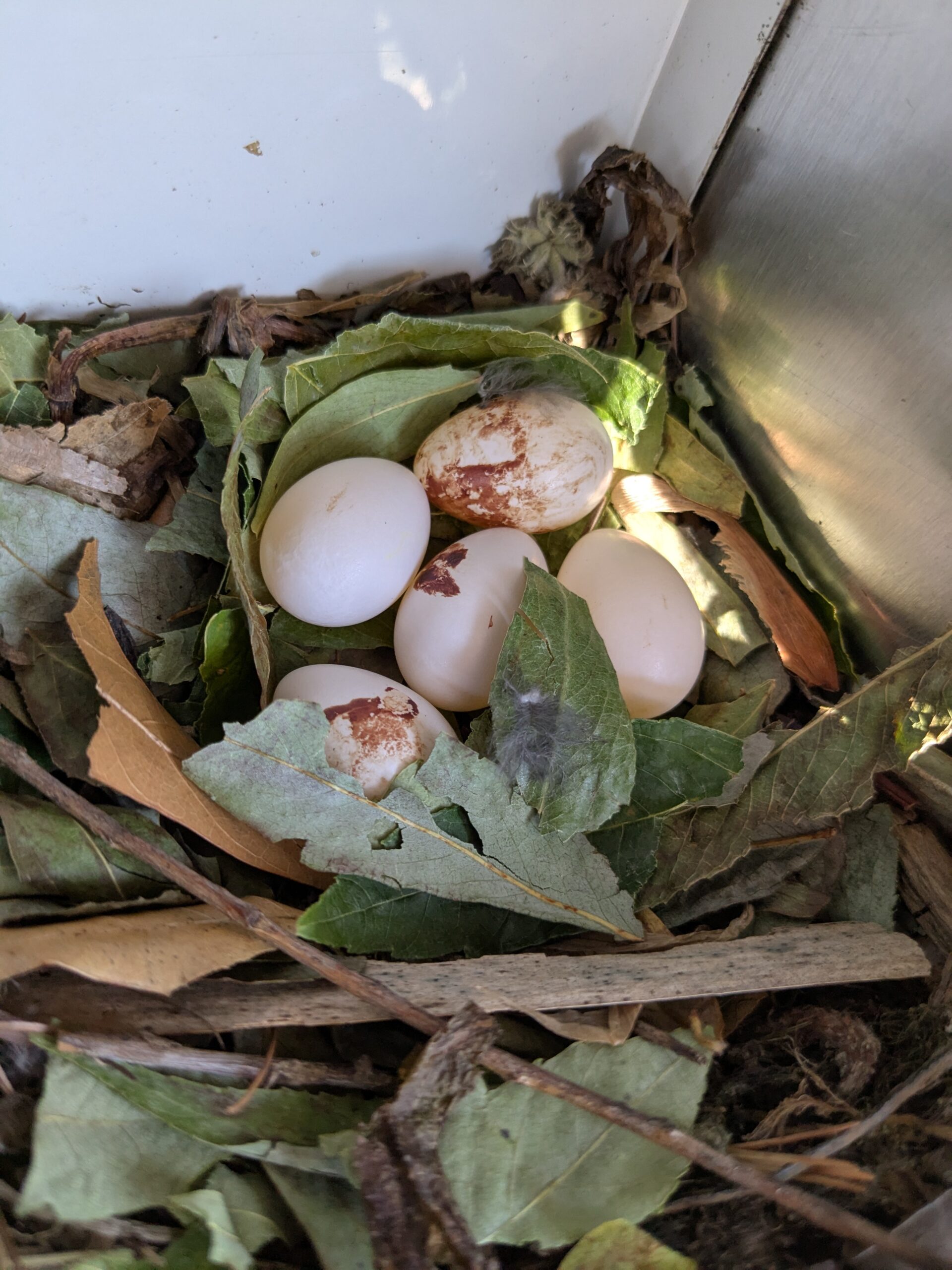Conservation Manager Chad Machinski, M.S., manages the stewardship of MA’s sanctuaries and engaging with our dedicated volunteers ever since. To help you stay connected with the work being done, he will be presenting regular online updates about activities going on at them: birds seen or heard, conservation work, improvements, interesting plants, and more.
While there is plenty going on around the Michigan Audubon Sanctuaries, I thought I would spend this month’s blog giving a short update on our Purple Martin colonies on Lake Lansing.
Frankly, it has been a tough summer for many Purple Martin landlords around the state. Late May saw a string of cool weather and rain, a recipe for disaster for Purple Martins. Prolonged days of poor weather result in few large flying insects out for Purple Martins to forage on, which can result in starvation. Many landlords have workarounds for this (see Penny Briscoe’s blog on supplemental feeding of Purple Martins), but not everyone is able to do this, nor do all Purple Martins take to these methods. Although anecdotal, there have been several reports of landlords losing many Purple Martins at their colonies, including six deceased at one of Michigan Audubon’s colonies on Lake Lansing. There is some concern that these die-offs may be related to Avian Influenza, but there has been no confirmed evidence of that thus far. Colonies are rebounding, but some landlords are reporting fewer eggs than this time last year; in addition, nesting has been later in many instances.
Michigan Audubon manages two colonies at Lake Lansing in Haslett. One colony is located at the public boat launch and is so far our only colony with active nests. Two nests with five eggs each have been recorded with the anticipated hatch date of June 24th-26th. Nest construction began over a month ago now and I have found their development fun to watch. Purple Martin nests begin with pine needles which are usually provided by the landlord. After this, the Purple Martins make a nest of their own and develop a little cup for their eggs that will be lined with green leaves. Purple Martins can bring in a wide variety of natural materials to construct the final version of their nest. What I have found so interesting about the two nests at the boat launch is how different they are. Prior to the finishing touches of green leaves, one nest was adding dead leaves, Maple samaras (aka: helicopters), and thick bits of dried grass to their nest. Then in the compartment directly opposite of this one, the Purple Martins there went a different route. They began forming their nest with sand, mud, stringy aquatic plants, and pine twigs. They’ve created quite a sturdy side to their nest, which may ultimately become what’s known as a “mud dam.”
Our other colony, located on the west side of Lake Lansing on a small patch of public grass, does not have an active nest, although there has been evidence of Purple Martin nest building for some time. Because this colony had six dead Purple Martins in it after the string of poor weather, I had thought it possible that no new nests would be constructed. However, a week later, there was evidence of nest building in one of the nests and during this week’s nest check a female Purple Martin landed on the perches to see what was going on. I am hopeful that there will be eggs soon.
One challenge at these colonies (as with many colonies) is the presence of House Sparrows. Being a non-native bird, House Sparrows are not protected under the Migratory Bird Treaty Act. If you are any sort of nest box landlord, you are likely well aware of the challenges that House Sparrows can bring to your nest box. At this Purple Martin Colony I am removing at least one completed House Sparrow nest twice a week from the housing. Many Purple Martin landlords trap and dispatch House Sparrows, which is the best management option; however, the logistics of doing this at a public property compared to a private property present challenges. As a result, we remove nests. The potential downside to this is House Sparrows may “retaliate” by damaging the eggs or young of neighboring birds; however, this may happen anyway. So far, there has been no instance of this happening to either nest at the active colony.
If you are interested in learning more about Purple Martins or are considering being a landlord yourself, please visit our website to learn what Michigan Audubon is doing in the state, and also visit the Purple Martin Conservation Association for a very detailed look at Purple Martins. If you are already a landlord please register your colony with us so that we can better understand Purple Martin distribution in the state.
To learn more about Michigan Audubon sanctuaries, visit michiganaudubon.org/conservation/bird-sanctuaries. If you want to volunteer at a Michigan Audubon sanctuary, please complete the Sanctuary Volunteer Interest Form.
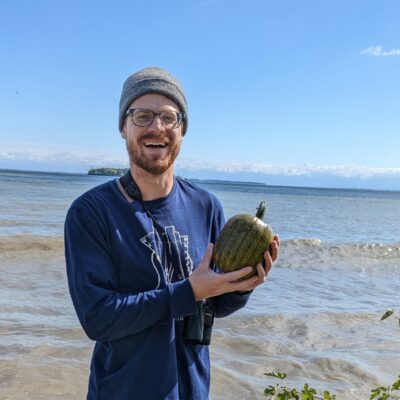
Chad Machinski, MS
Conservation Manager
While Chad’s first love is botany, he doesn’t deny the intertwining nature of birds, plants, insects, and all other organisms we share the world with. His passion for the natural world began in his undergraduate time at the University of Michigan, taking several different forms along the way. His graduate studies at the University of Michigan allowed him to more closely examine the natural communities of Michigan and further understand the complex nature of ecosystems. His work as a Nichols Arboretum Caretaker while in school further enabled him to be directly involved in conservation work as he led workdays removing invasive plant species, performed trail maintenance, and guided tours. Chad can usually be found out in a park in a few ways: binoculars glued to his face, hunched over looking at plants, or flipping logs looking for snakes and salamanders.
